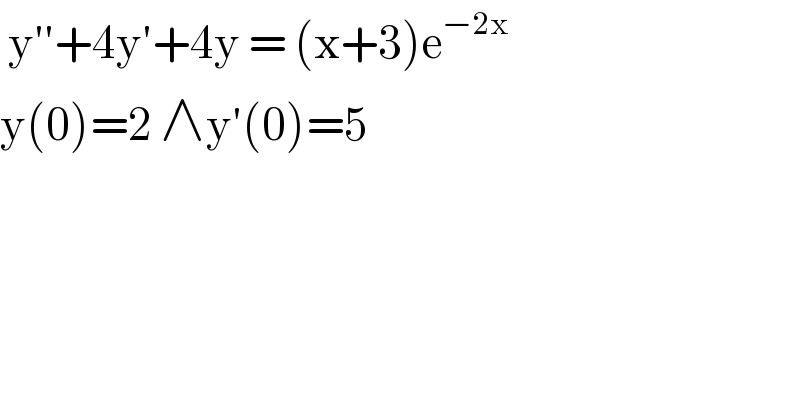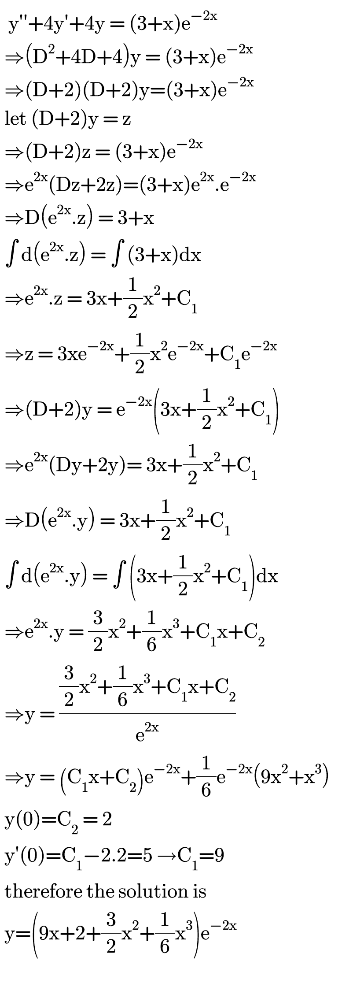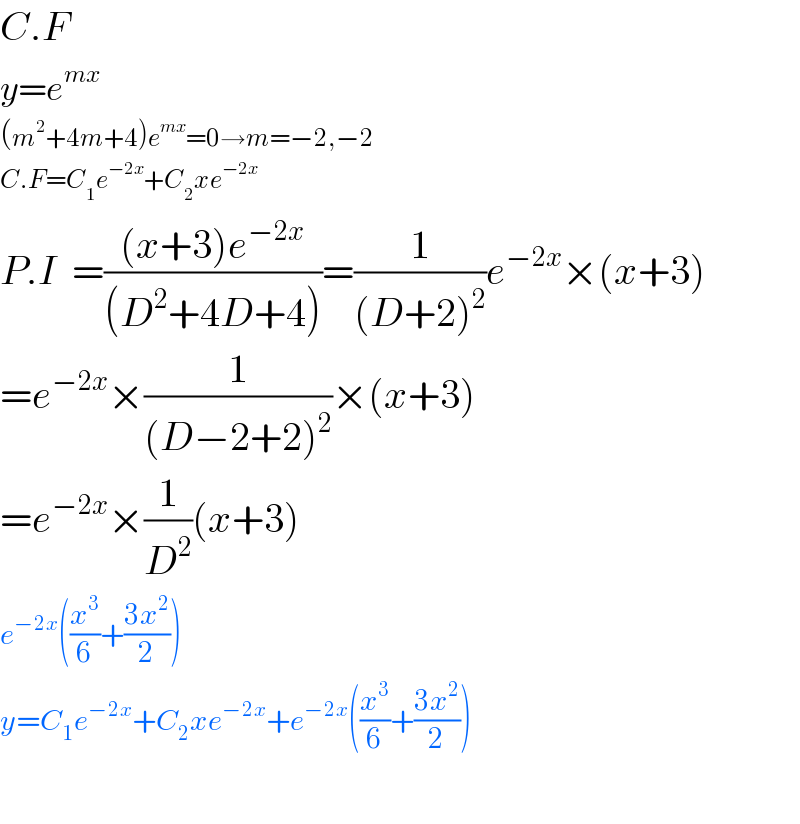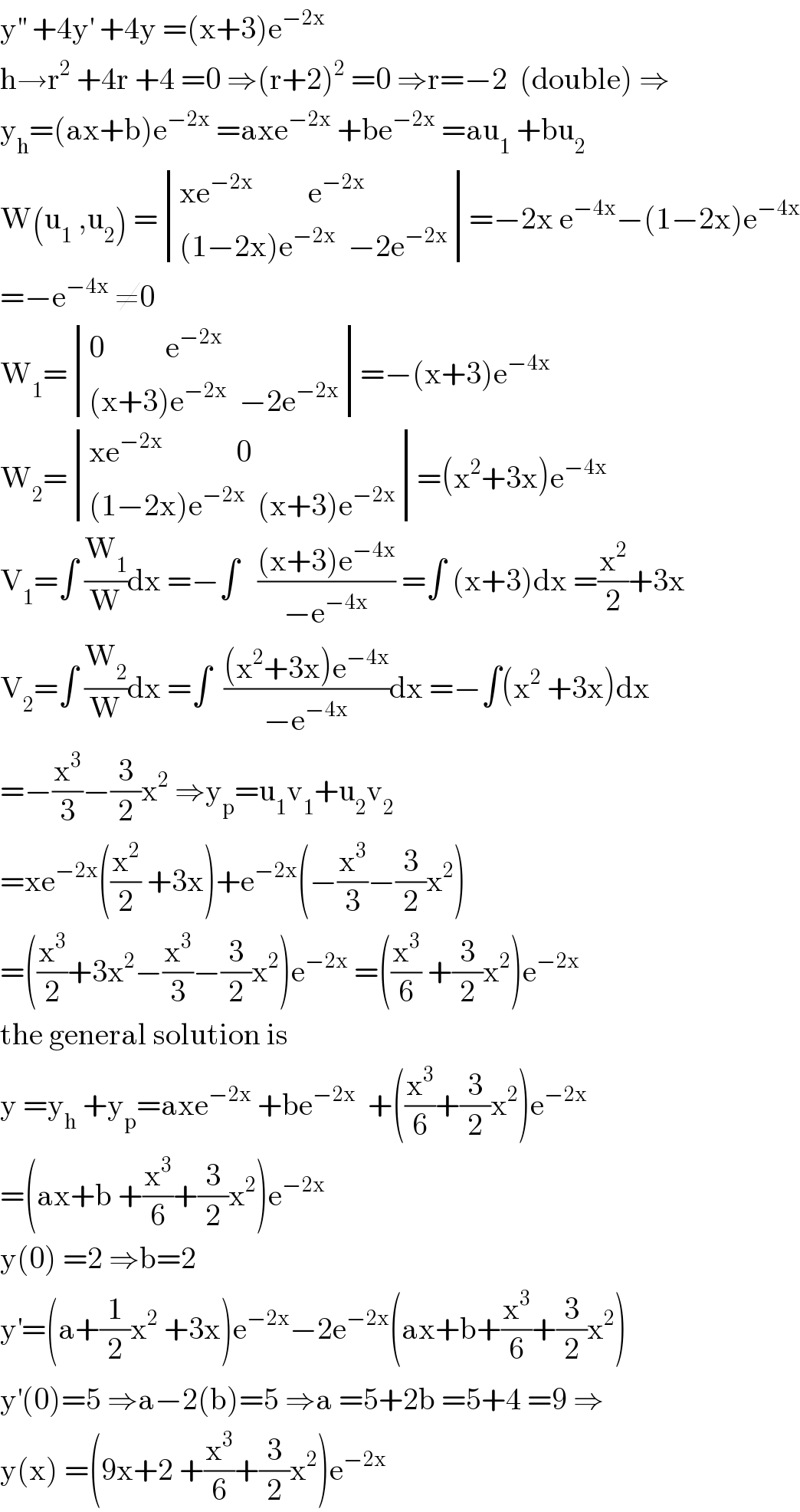
Question and Answers Forum
Previous in Differential Equation Next in Differential Equation
Question Number 121517 by liberty last updated on 09/Nov/20

Answered by benjo_mathlover last updated on 09/Nov/20

Answered by TANMAY PANACEA last updated on 09/Nov/20

Answered by mathmax by abdo last updated on 09/Nov/20

